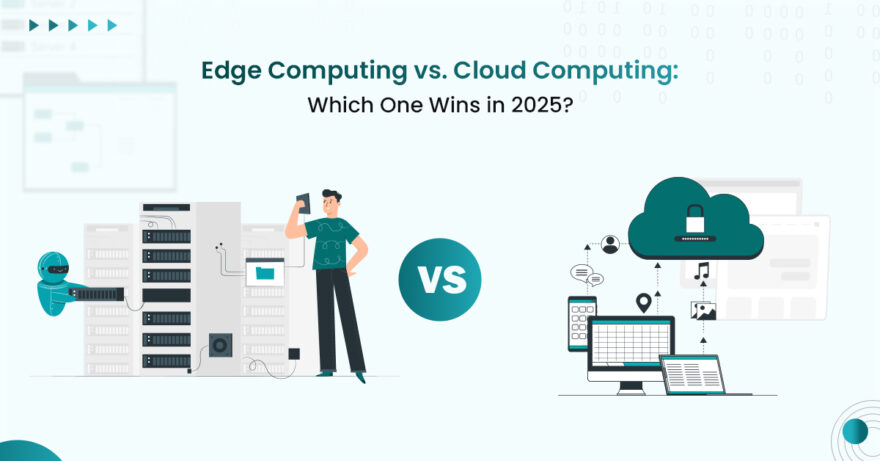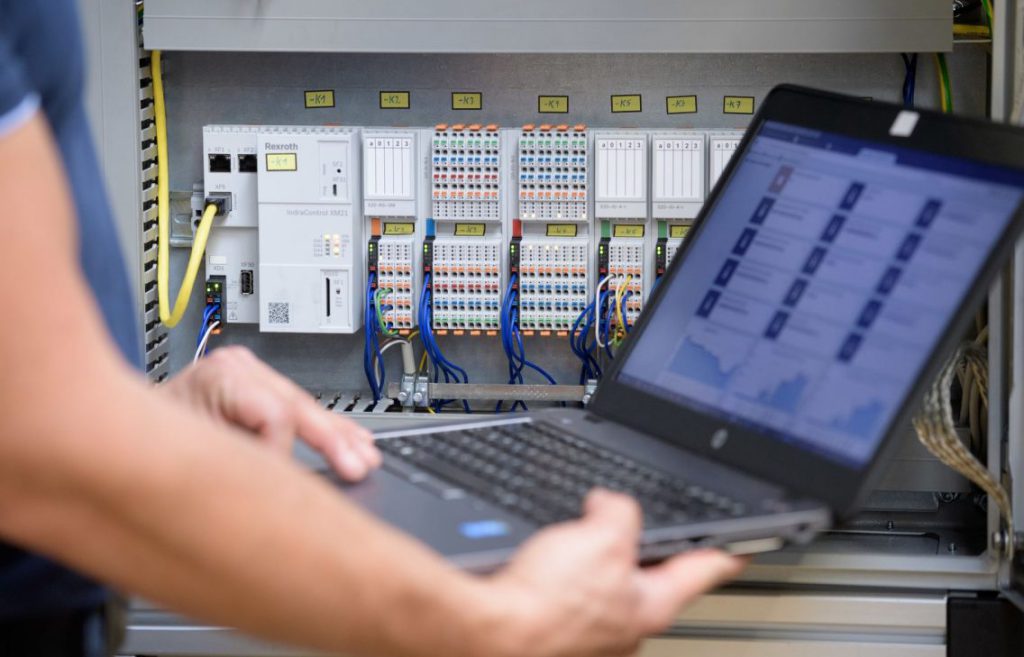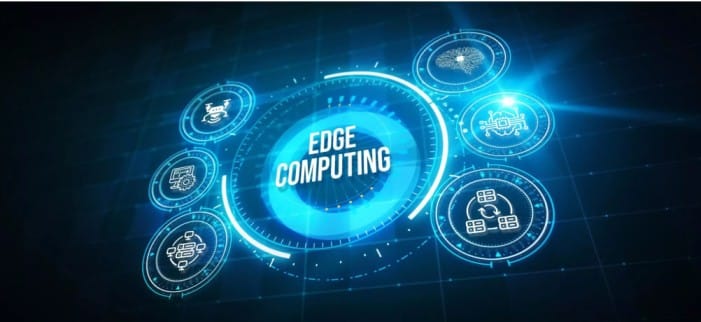You know what? We’ve hit a strange place in tech. Everything’s connected. Everything’s fast. But somehow, we still end up asking: Where should the brain of the operation actually live?
Should it live in a massive server farm in Oregon? Or maybe right on your smartwatch?
Welcome to the crossroads of edge computing and cloud computing. Both are shaping how we build, deploy, and run apps. And if you’re an entrepreneur, developer, or just a curious geek, this matters more than ever in 2025.
Let’s dig into the difference between edge and cloud computing, and see who’s really pulling ahead this year. But heads-up—it might not be a simple winner-takes-all situation.
First, What’s the Real Difference?
Let’s not overcomplicate it.
The difference between edge and cloud computing comes down to where the computing happens. Cloud computing is all about sending data to powerful, centralized data centers—often managed by big players like AWS, Google Cloud, or Azure. You send your data over the internet, and it gets processed, analyzed, stored, and sometimes even transformed with machine learning, before coming back to you.
Edge computing, on the other hand, is more of a local hero. Instead of sending everything off to a distant server, the processing happens on the device itself—or very close to it. Think of a smart camera recognizing faces without ever sending the footage to the cloud.
This isn’t just technical trivia. It changes everything—how apps work, how fast they feel, and how secure they are.
Why Cloud is Still King (For Now)
Let’s be real. The cloud has had a solid decade (or more) to grow up. And in 2025, it’s more robust than ever. The cloud computing trends 2025 list is long—and impressive.
Here’s what stands out:
- Global Resilience: Cloud infrastructure now comes with AI-based self-healing, redundancy, and failovers. Apps rarely go down anymore—at least not for long.
- Smarter Scalability: Cloud platforms can predict and auto-scale your resources ahead of traffic spikes. Your app’s holiday season? Handled.
- Security as a Service: From DDoS protection to real-time threat detection, cloud platforms offer layers of baked-in defense.
- Tooling Explosion: If you’re in cloud application development, you have thousands of SDKs, APIs, and dev tools at your fingertips. No need to reinvent the wheel.
If you’re running a startup or even a midsize business, it’s likely you’re working with a third-party application development company. And guess what? Most of them are cloud-native now.
They’re delivering faster MVPs, integrating APIs like Stripe or Twilio, and building globally scalable platforms—all in the cloud.
So yes, the cloud is alive and well. Especially if you’re knee-deep in cloud application development services or hosting multi-tenant SaaS platforms.
Enter the Challenger: Edge Gets Serious in 2025
Now, let’s not sleep on the edge.
In 2025, edge computing isn’t just a side hustle. It’s hitting the mainstream, especially in areas that need instant feedback and hyper-local control.
We’re talking:
- Smart Homes and Cities: Doorbells with facial recognition, traffic lights that adapt to flow in real-time—these need edge.
- Healthcare Monitoring: Devices that track vitals in real-time, detect anomalies, and alert caregivers—all on-device.
- Autonomous Vehicles: A car can’t wait for the cloud to decide if it should brake. It has to be decided now.
And for developers building mobile-first solutions, the conversation is changing. Gone are the days when “wait for server response” was acceptable UX.
That’s why edge computing for mobile apps is getting serious traction. Whether it’s local caching, offline AI inference, or device-side encryption, modern mobile apps are increasingly leaning into edge power.
For companies building hardware or IoT tools, IoT development solutions with built-in edge capabilities are now essential. Devices are smarter. They’re more autonomous. And they work—even when the network doesn’t.
Why Not Just Use One or the Other?
You might be thinking: “Cool, but I need to pick one, right?”
Not really. That’s the beauty of it.
2025 is all about hybrid architectures. Think of it like this:
- Use cloud computing for heavy lifting, storage, analytics, and user dashboards.
- Use edge computing for real-time decisions, data filtering, and localized control.
Say you’re a logistics company. You deploy sensors on trucks to monitor temperature, location, and delays. The sensors use edge computing to decide if a shipment’s conditions are slipping—maybe it reroutes itself. Meanwhile, the cloud gets updated logs, powers dashboards, and predicts delivery times using AI.
The blend is where the magic happens.
How AI Plays Into This?
Let’s talk about AI, because you can’t scroll three feet without tripping over a new chatbot or predictive tool.
AI loves the cloud. And the cloud loves AI.
Training AI models—especially big ones—requires computational muscle. That’s why any serious AI development company leans heavily on cloud GPUs and TPUs.
But here’s the twist: once the models are trained, inference (aka the part where the AI actually makes decisions) can—and often should—happen on the edge.
Voice assistants on your phone? They don’t send every command to the cloud anymore. AI runs directly on the chip. That’s edge computing.
So we’re seeing this split emerge:
- Train AI in the cloud
- Run AI at the edge
It’s faster, more private, and often more cost-effective.
But Wait—There’s More
Okay, here’s something else people often overlook: compliance.
Regulations in 2025 are no joke. GDPR, CCPA, and newer privacy laws worldwide are forcing companies to rethink how they store and process user data.
Edge computing makes compliance easier in some cases. If sensitive data never leaves the user’s device, you don’t have to store it. That’s one less liability.
But the cloud’s catching up. Many cloud application development services now offer region-specific storage, data residency guarantees, and advanced access controls.
Still, if you’re dealing with highly sensitive data, like medical records or financial transactions, keeping processing close to the device (i.e., edge computing) adds an extra layer of control.
Real-World Hybrid Use Cases
Let’s round this out with a few real-life examples. Because theory is great—but how’s this actually being used?
1. Smart Manufacturing
Factories are deploying smart sensors that analyze vibration, temperature, and performance on-site. If something looks off, they shut down the machine. That’s edge computing.
But all that data also gets sent to the cloud, where it’s used for long-term analysis, quality assurance reports, and predictive maintenance using AI.
2. Fitness Tech
Your smartwatch tracks your heartbeat and steps using edge computing. It doesn’t need the cloud to tell if your heart rate is spiking.
But at the end of the day, the device syncs with your phone, uploads to the cloud, and contributes to overall health insights.
3. Retail Experiences
In physical stores, edge devices track customer behavior—dwell times, aisle heatmaps, purchase history—locally and in real-time.
Meanwhile, the cloud analyzes cross-store data, recommends restocks, and updates the e-commerce inventory view.
What You Should Actually Do?
Okay, so you’re not building smart cities or training AI models (yet). But maybe you’re a founder, a product manager, or you’re working with an application development company right now.
Here’s your move:
- Don’t choose blindly. Ask your dev team whether parts of your app need real-time speed or offline capabilities. That’s edge territory.
- Think long-term. Even if you’re all-in on the cloud now, architect in a way that you can add edge components later.
- Prioritize user experience. If a laggy app frustrates users, the cloud alone might not cut it.
- Partner wisely. Find a firm that knows both sides—someone who offers cloud application development and understands IoT development solutions with edge capabilities.
Because tech isn’t one-size-fits-all anymore. It’s all about flexibility, performance, and being prepared for the next wave—whatever that might be.
Final Word: There’s No “Winner” — Just Smarter Choices
So, edge computing vs. cloud computing—who wins?
Neither. And both.
In 2025, it’s not about rivalry. It’s about choosing the right tool for the job. The smartest teams blend both—leaning into speed and privacy at the edge, while scaling intelligence and reach through the cloud.
The result? More powerful apps, better user experiences, and platforms that are ready for whatever’s next.
And honestly, that’s the win we all needed.



2 thoughts on “Edge Computing vs. Cloud Computing: Which One Wins in 2025?”